49 Most Essential Kitchen Secrets
1. Make Sure Eggs are Fresh
If you’re unsure of an egg’s freshness, see how it behaves in a cup of water: Fresh eggs sink; bad ones float.
2. Extend Veggie Freshness
Line the bottom of your refrigerator’s crisper drawer with paper towels. They’ll absorb the excess moisture that causes veggies to rot.

3. Keep Champagne Bubbly
Don’t throw away sparkling wine or champagne that’s gone flat. Restore the bubbles by dropping a raisin or two into the bottle. The natural sugars will work magic.

4. Don’t Waste Lemons
If you need only a few drops of lemon juice, avoid cutting the lemon in half — it will dry out quickly that way. Instead, puncture the fruit with a metal skewer and squeeze out exactly what you require. If you wonder what to do with rest of lemon, there is a 66 life changing thing you can do with a lemon.

5. Keep Herbs Fresh
To keep herbs tasting fresh for up to a month, store whole bunches, washed and sealed in plastic bags, in the freezer. When you need them, they’ll be easier to chop, and they’ll defrost the minute they hit a hot pan.

6. Repel Bugs
A bay leaf slipped into a container of flour, pasta, or rice will help repel bugs.

7. Make Mushrooms Slime-Free
Prevent mushrooms from getting slimy by wrapping them in paper towels before refrigerating.

8. Avoid Stale Muffins
To revive day-old muffins, sprinkle them with water, place in a paper bag, and pop in a hot oven for five to 10 seconds. The steam created by the water will restore moisture.

9. Don’t Let Cheese Dry Out
Stop cheese from drying out by spreading butter or margarine on the cut sides to seal in moisture. This is most effective with hard cheeses sealed in wax.

10. Make Veggies Crunchy
When radishes, celery, or carrots have lost their crunch, simply pop them in a bowl of iced water along with a slice of raw potato and watch the limp vegetables freshen up right before your eyes.

11. Don’t Let Cookies Get Hard
Store crispy and chewy cookies in separate containers. If you combine them, the moisture from the chewy cookies will make the crispy ones lose their crunch.

12. Prevent Bananas From Browning
Avoid separating bananas until you plan to eat them—they spoil less quickly in a bunch or you can always make a banana muffins

13. Don’t Let Salt Harden
Put rice in your saltshaker to stop the salt from hardening. The rice absorbs condensation that can cause clumps.

14. Keep Butter Flavorful
Stock up on butter when it’s on sale—you can store it in the freezer for up to six months. Pack the butter in an airtight container, so it doesn’t take on the flavor of whatever else you’re freezing.

15. Prevent Bacteria Growth on Dairy
Another dairy tip: In order to make cottage cheese or sour cream last longer, place the container upside down in the fridge. Inverting the tub creates a vacuum that inhibits the growth of bacteria that causes food to spoil.

16. Keep Honey Clear
Believe it or not, honey is the only nonperishable food substance, so don’t get rid of the stuff if it crystallizes or becomes cloudy. Microwave on medium heat, in 30-second increments, to make honey clear again.

17. Retain Moisture in Pasta
Prevent extra cooked pasta from hardening by stashing it in a sealed plastic bag and refrigerating. When you’re ready to serve, throw the pasta in boiling water for a few seconds to heat and restore moisture.

18. Save Your Cheese
You can freeze cheese! After serving, put leftovers back in the original package, wrap tightly in plastic, and freeze. Defrost in the fridge a day before serving. This trick works best for soft cheeses with a high fat content.

19. Protect Brown Sugar From Hardening
Keeping brown sugar in the freezer will stop it from hardening. But if you already have hardened sugar on your shelf, soften it by sealing in a bag with a slice of fresh bread or an apple — or by microwaving on high for 30 seconds.
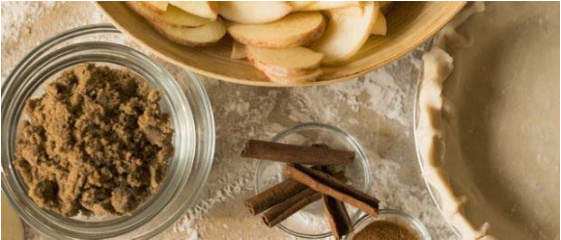
20. Make Soup Less Salty
There’s nothing more frustrating than over-salting a soup or stew you’ve spent countless hours—and countless dollars in ingredients—making. Try adding wedges of raw potato or apple to absorb the salt. Simmer for 10 minutes or so, then remove the wedges. If your soup is still too salty, sprinkle in a spoonful of sugar. If that doesn’t work, a dash of apple-cider vinegar may do the trick. Finally, try diluting with water or low-sodium broth.

21. Get Rid of Soup Fat
And don’t despair about soup that’s too fatty—it can be fixed. If you have time, put the pot of soup in the refrigerator, wait 30 minutes, then skim the grease from the top and reheat. If you’re short on time, add a few ice cubes and remove them as soon as you see grease sticking to them. Or try tossing a large lettuce leaf into the pot to absorb any extra oil. Discard the leaf once it looks limp.

22. Substitute Yogurt for Cream
In a pinch, yogurt can be substituted for cream in recipes that don’t require cooking. But yogurt can curdle when cooked—in which case, it’s best to stick with whole milk or half-and-half.

23. Prevent Burnt Milk
If you burn milk while heating it on the stove, add a pinch of salt to temper the scorched smell and taste.

24. Combat Meat Toughness
Marinate inexpensive cuts of meat in at least one of the following: beer; vinegar; or citrus, papaya, tomato, or pineapple juices. These liquids contain enzymes or acids that will combat the meat’s toughness.

25. Tenderize Meat
And if all else fails, tenderize tough meat by gently scoring the surface with a pizza cutter—for better results, go against the grain of the meat.

26. Save Burnt Gravy
If you burn gravy and don’t have enough time—or pan drippings—to start from scratch, stir in a teaspoon of smooth peanut butter for each cup of gravy. This should eliminate any burned taste.

27. Cut Corn More Easily
Minimize waste and mess when cutting corn from the cob by mounting the cob in the hollow center of a Bundt cake pan, where it will be secure. When you run a knife down the cob, kernels will collect in the pan.

28. Make Juicing More Efficient
Before juicing citrus fruits, roll them back and forth on your kitchen counter to better release liquid from the segments inside.

29. Ripen Fruit Quickly
To ripen fruit overnight, place it in a paper bag with an apple. Apples release ethylene gas that hastens the maturing process of other fruits.

30. Rid of Containers of Odors
Because plastic food containers are porous, they frequently retain odors even after washing. Store them with crumpled-up black-and-white newspaper inside to absorb odors. Then give containers a rinse before using again.

31. Easily Break Down Poultry
A butcher’s trick for breaking down poultry: First, separate the legs from the body. Next, separate the drumsticks from the thighs. Then, separate the wings from the body. Place the chicken breast-side down and cut along each side of the spine to remove the backbone. Finally, cut the breast in half.

32. Get A Healthy Dose of Omega 3s
To get a healthy dose of omega-3 fatty acids—without spending a fortune on fresh fish— incorporate canned anchovies into your cooking. Try sautéing them in olive oil and garlic before using, and they’ll dissolve into an olive-like relish. Or buy anchovy paste, which virtually disappears in sauces and salad dressings.
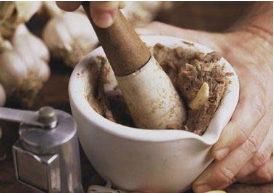
33. Keep Cookie Sheet Organized
A vertical file folder can find a new home in the kitchen, keeping cookie sheets upright.

34. Freeze Waffles and Pancakes
Package extra pancakes and waffles as single servings in airtight plastic bags and freeze. When you need a quick breakfast, just reheat the frozen treats in your toaster.
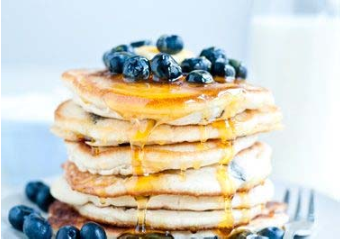
35. Turn Leftover Mashed Potatoes Into Croquettes
Form cold mashed potatoes into little balls, dip in beaten egg, coat in bread crumbs, and sauté or deep-fry. You can also mix in crabmeat or salmon.

36. Put Extra Rice to Good Use
If you’ve cooked more rice than you can eat, make rice pudding by adding butter, cinnamon, sugar, and milk. Or create fried rice by sautéing with a beaten egg, soy sauce, and sliced green onions. Or toss rice with slivered almonds and raisins for a Middle Eastern–inspired pilaf.

37. Make Soup Stock More Flavorful
After finishing off a wedge of hard cheese, save the rind and use it to flavor soup stock. Just be sure to remove the rind and strain the broth before serving.

38. Make Ice Cubes From Iced Coffee
No need to pour a pot of leftover brewed coffee down the drain. Freeze the liquid in ice-cube trays to add to iced coffee instead of regular ice cubes. Your coffee won’t lose its potency as the cubes melt.

39. Save Excess Bacon Fat
It’s almost un-American to throw away bacon fat. Store the useful (if admittedly unhealthy) stuff in an airtight aluminum or stainless steel container in the freezer, and use it to make corn bread or fry eggs or potatoes. You can also use bacon fat instead of oil in a spinach salad: Combine two parts bacon fat to three parts balsamic vinegar. Add one part vegetable oil to the mix if you like a less pungent dressing.

40. Prevent Extra Cooked Pasta From Hardening
Stash extra pasts in a sealed plastic bag and refrigerate. When you’re ready to serve, throw the pasta in boiling water for a few seconds to heat and restore moisture.

41. Give New Life to Stale Bread
Instead of tossing out stale bread, cut it into small rounds and freeze. Toasted, it makes a cheap, tasty substitute for fancy crackers.
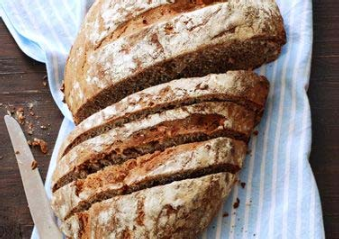
42. Give New Life to Stale Bread
Instead of tossing out stale bread, cut it into small rounds and freeze. Toasted, it makes a cheap, tasty substitute for fancy crackers.
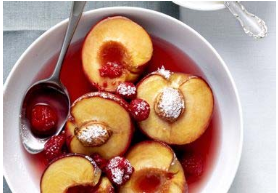
43. Make Instant Chocolate Pudding
Make instant chocolate pudding with whipping cream instead of water to create a rich-tasting mousse.

44. Layer Ice Cream
Layer vanilla ice cream with crushed cookies (or even just cookie crumbs) in a martini glass.

45. Make a Mini Trifle
Throw together a trifle with sliced grocery-store pound cake, whipped cream, and overripe berries macerated with sugar and your favorite liqueur.

46. Make Store Bought Cake Icing Taste Better
Make store-bought cake frosting go twice as far: Whip the icing with your electric mixer and let air plump it up.
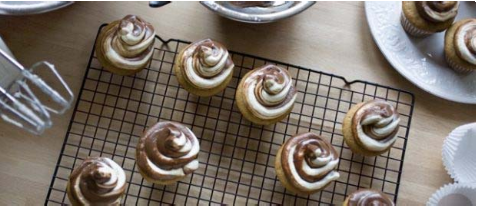
47. Make store-bought cake frosting go twice as far
Whip the icing with your electric mixer and let air plump it up.

48. Save a Scorched Pan
To save a scorched pan, sprinkle the burned bottom with baking soda, then add four to five tablespoons salt, plus enough water to cover, and let stand overnight. Scrape out charred remains with a rubber spatula.
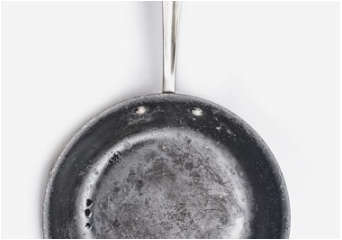
49. Keep Copper Polished
Use ketchup to polish copper: Just apply a thin coat of the condiment, and rub off with a clean Rag.




















































